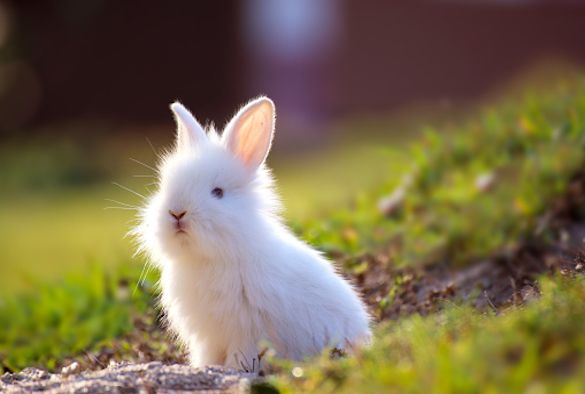The University’s Small Animal Veterinary Surveillance Network (SAVSNET) is raising awareness of a devastating disease in pet rabbits as part of Rabbit Awareness Week.
Flystrike is completely preventable and treatable if identified early, however there is a lack of awareness amongst rabbit owners.
Flystrike is caused by larvae of the green bottle fly feeding on the surface of the skin. This can cause severe tissue damage that is susceptible to secondary bacterial infections and may result in death of the animal.
The team has recently published research in Preventive Veterinary Medicine that analysed electronic health records from over 40,000 pet rabbit consultations collected from UK veterinary practices to identify the risk factors for flystrike across the nation. One of the key findings was to precisely define the impact of temperature on disease risk. For every 1°C rise in the average local temperature, there was a 33% increase in the risk of flystrike, with risk from peaking between June and August. However, rare cases were recorded as early as March.
They’ve also joined forces with expert vet Molly Varga, who teaches Liverpool Veterinary students about rabbit disease, to create 10 top tips for rabbit owners on preventing flystrike:
-
Check your rabbit daily, and twice daily during peak season from June to August:
-
Keep your rabbits clean:
Lack of grooming and overall poor coat hygiene can increase the risk of flystrike. The vast majority of blowfly strike affects the perineal area. Clean your rabbit’s bottom if it’s dirty as organic matter can attract flies.
-
Keep your rabbits’ hutch/environment clean:
-
Keep your rabbits’ at a healthy weight:
Increased weight in rabbits increases the risk of Flystrike.
-
Don’t change your rabbits’ diet quickly or feed lots of greens:
-
Use vet-approved insect repellent on your rabbits and use fly killers around the hutch:
-
Be extra vigilant with older rabbits:
Rabbits aged five and over were almost four times more likely to be affected by flystrike. This might be because with age rabbits become less able to efficiently groom themselves, or because they receive less human interaction, such that owners may fail to, or take longer to, identify those health risks that predispose to flystrike.
-
Be extra vigilant between June and August:
-
Have your rabbits checked regularly by your vet:
-
Call your vet if you are worried, especially if you suspect flystrike.
For more useful information about flystrike visit https://www.liverpool.ac.uk/savsnet/flystrike-in-rabbits/
The Small Animal Veterinary Surveillance Network (SAVSNET) is a BBSRC-funded project based at the University of Liverpool, collecting large volumes of electronic health data from veterinary practices and diagnostic laboratories to improve understanding of diseases affecting companion animals.
